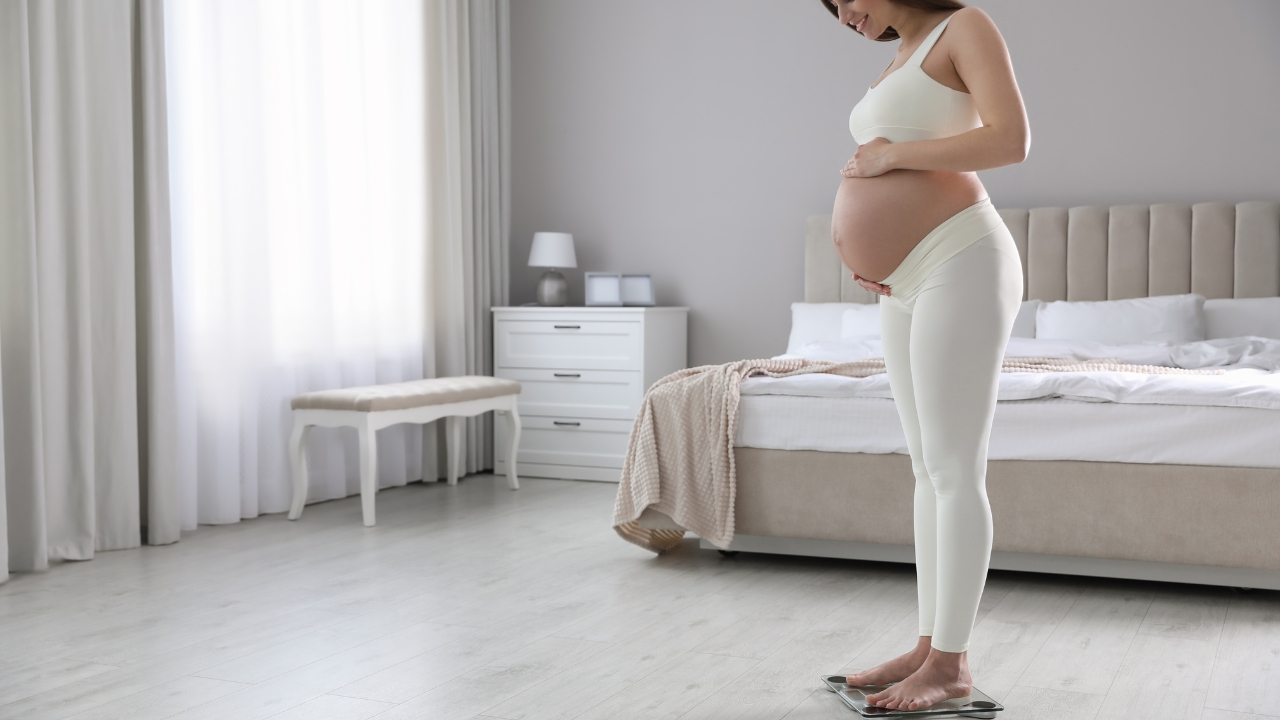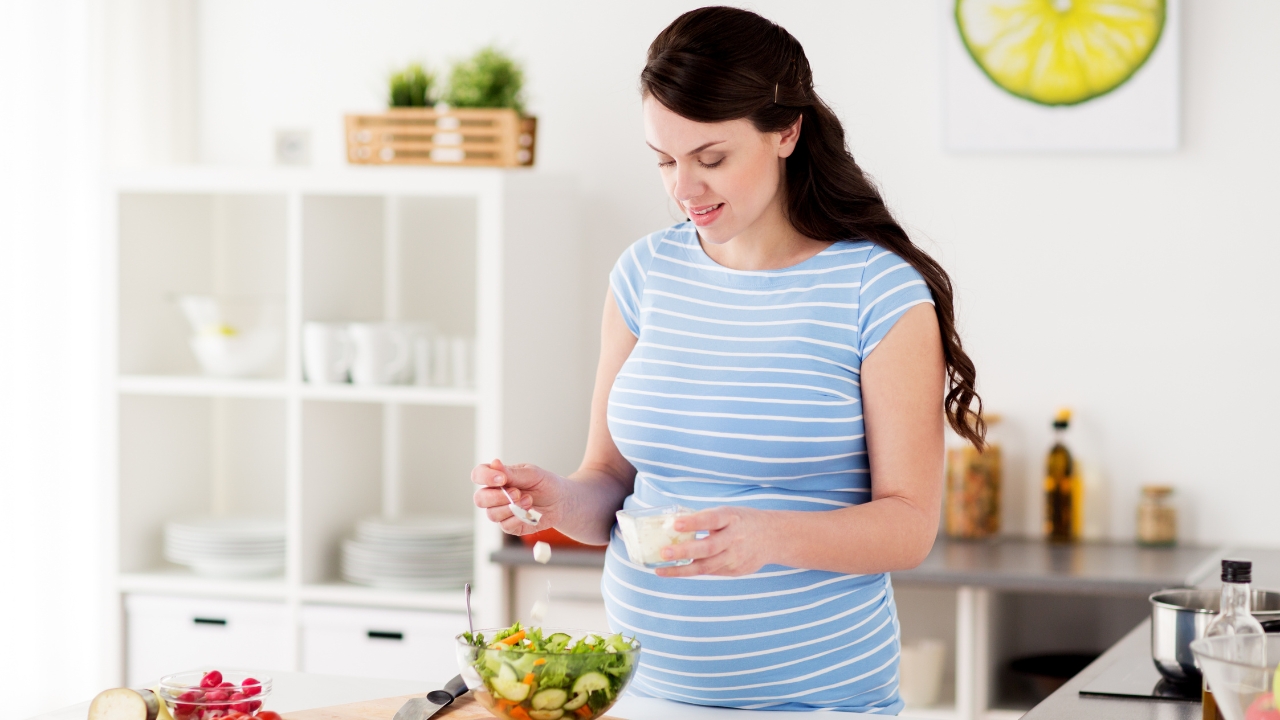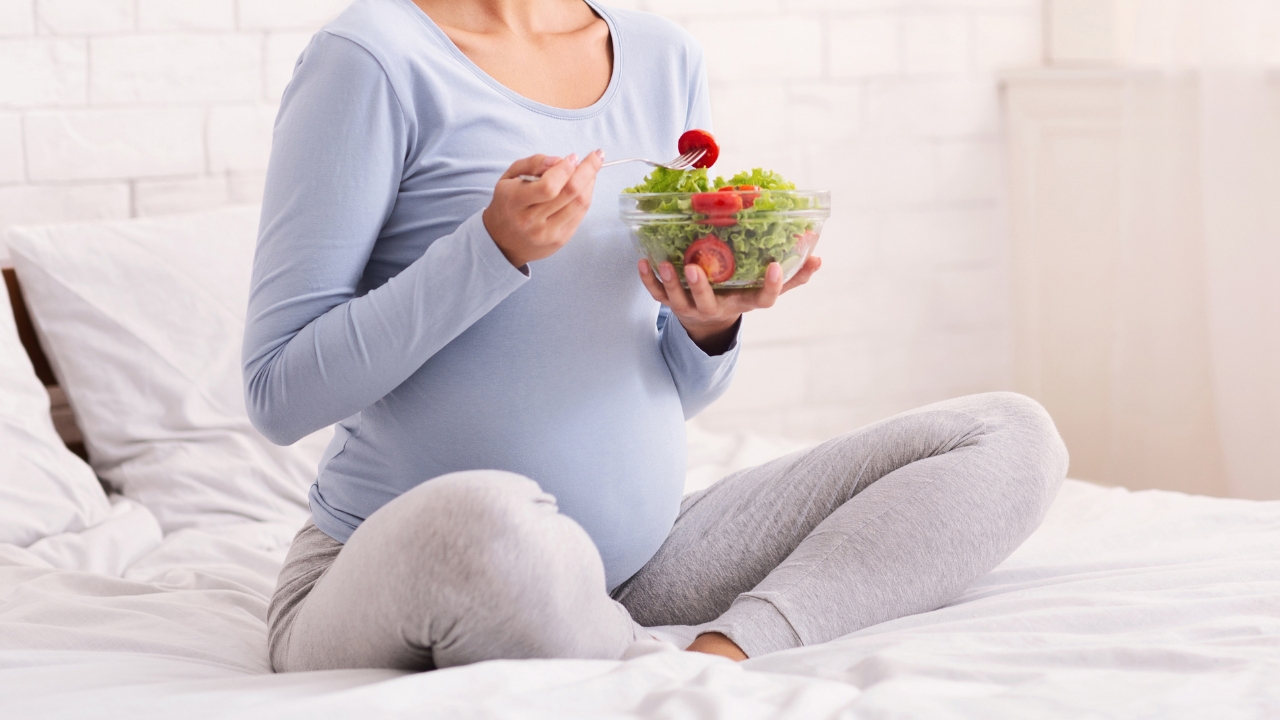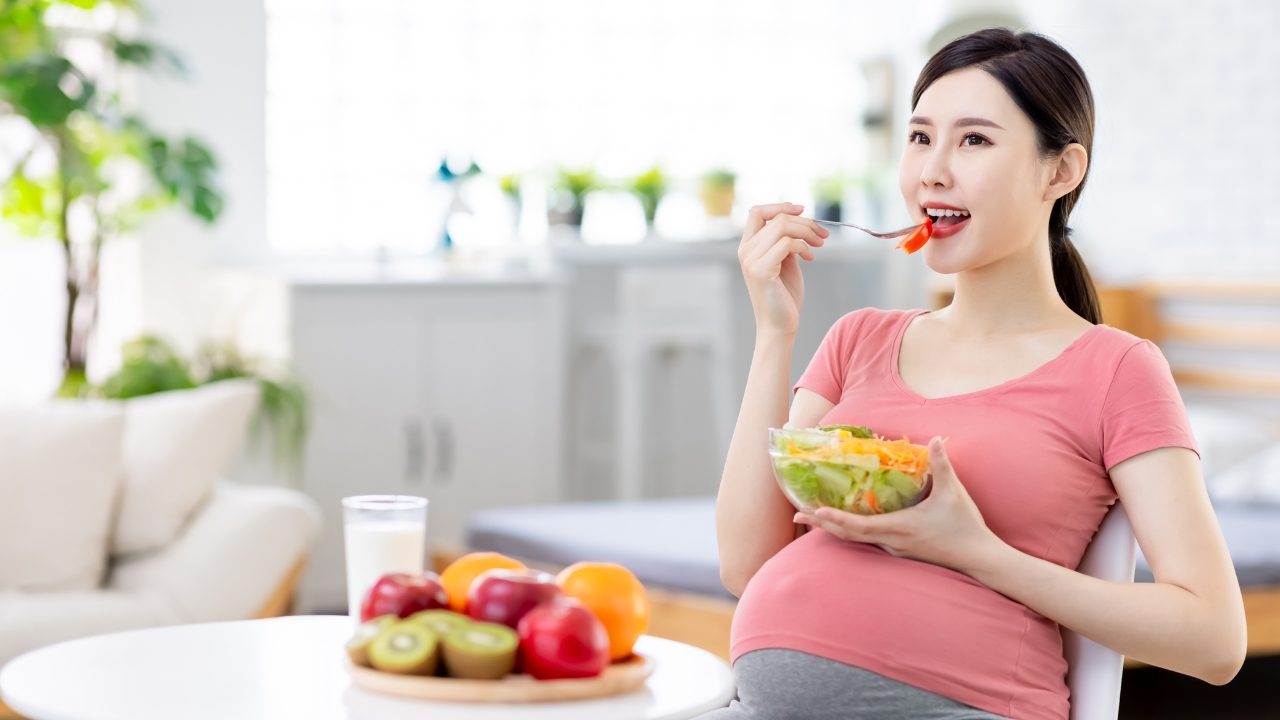 Evidence Based
Evidence Based
Iron-Rich Foods for Pregnancy: According To Experts
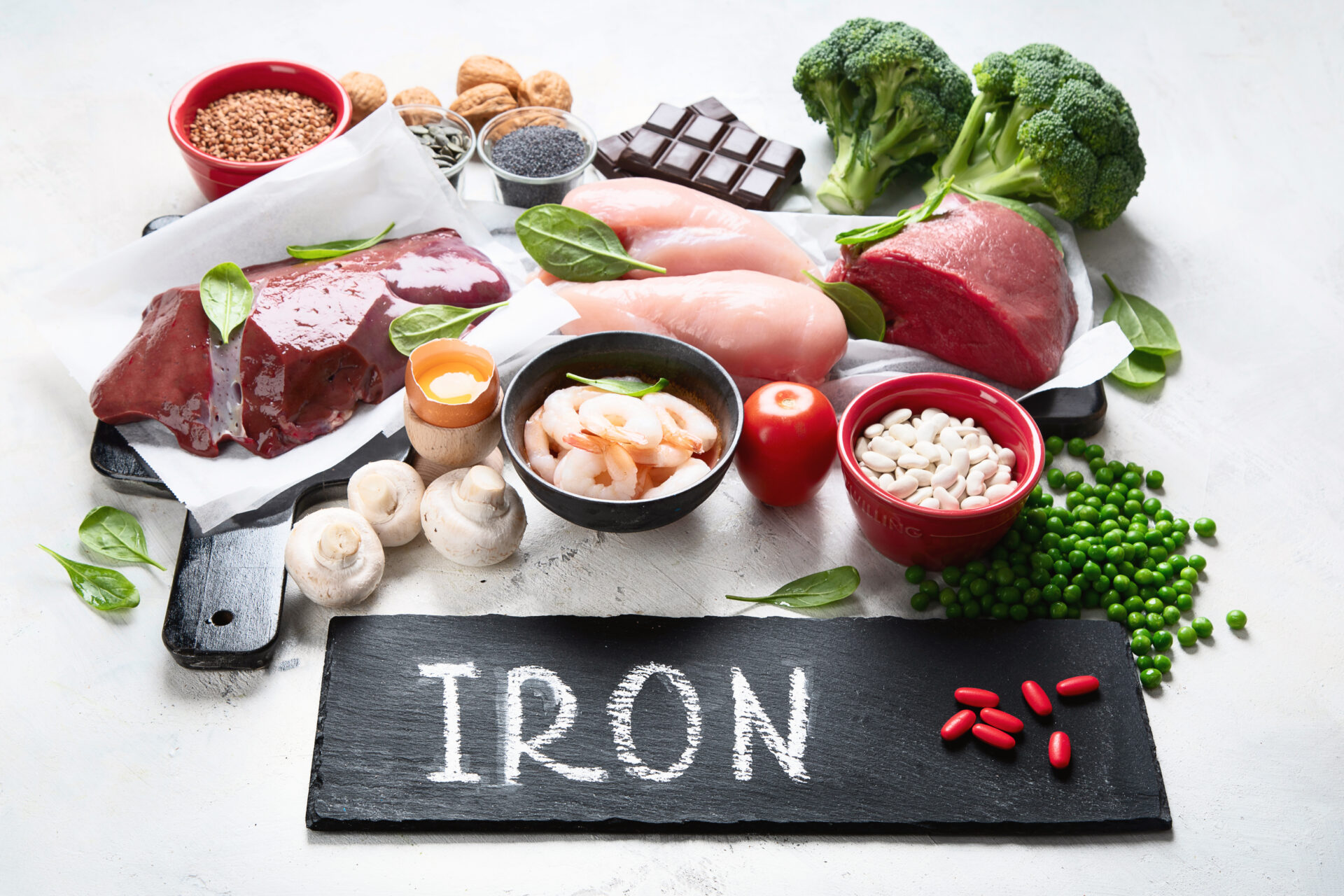
Iron-rich foods are healthy for pregnant women and their babies.Photo: Tatjana Baibakova/shutterstock
Pregnancy is a time of change and growth, not just for the baby but also for the mother. During pregnancy, a woman’s body has to adjust to support the growing baby, leading to a greater need for more nutrients.
One key nutrient that plays a crucial role during this period is iron. Iron is essential for producing hemoglobin, the protein in red blood cells that carries oxygen to other cells. However, many women find it challenging to meet this increased demand. The importance of this nutrient reaches far more than quelling women’s hunger in early pregnancy. Adequate iron intake is essential to prevent complications like anemia. In this article, we will explore the importance of iron during pregnancy and see some iron-rich foods for pregnancy.
Iron-rich Foods for Pregnancy
- Iron supports increased blood volume, prevents anemia, and promotes fetal development.
- Pregnant women need about 27 mg of iron per day.
- Some foods that contain iron for pregnant women include beef, chicken, lentils, and salmon.
- For cases of chronic iron deficiency, it is best to consult a healthcare professional.
Why Is Iron So Important During Pregnancy?
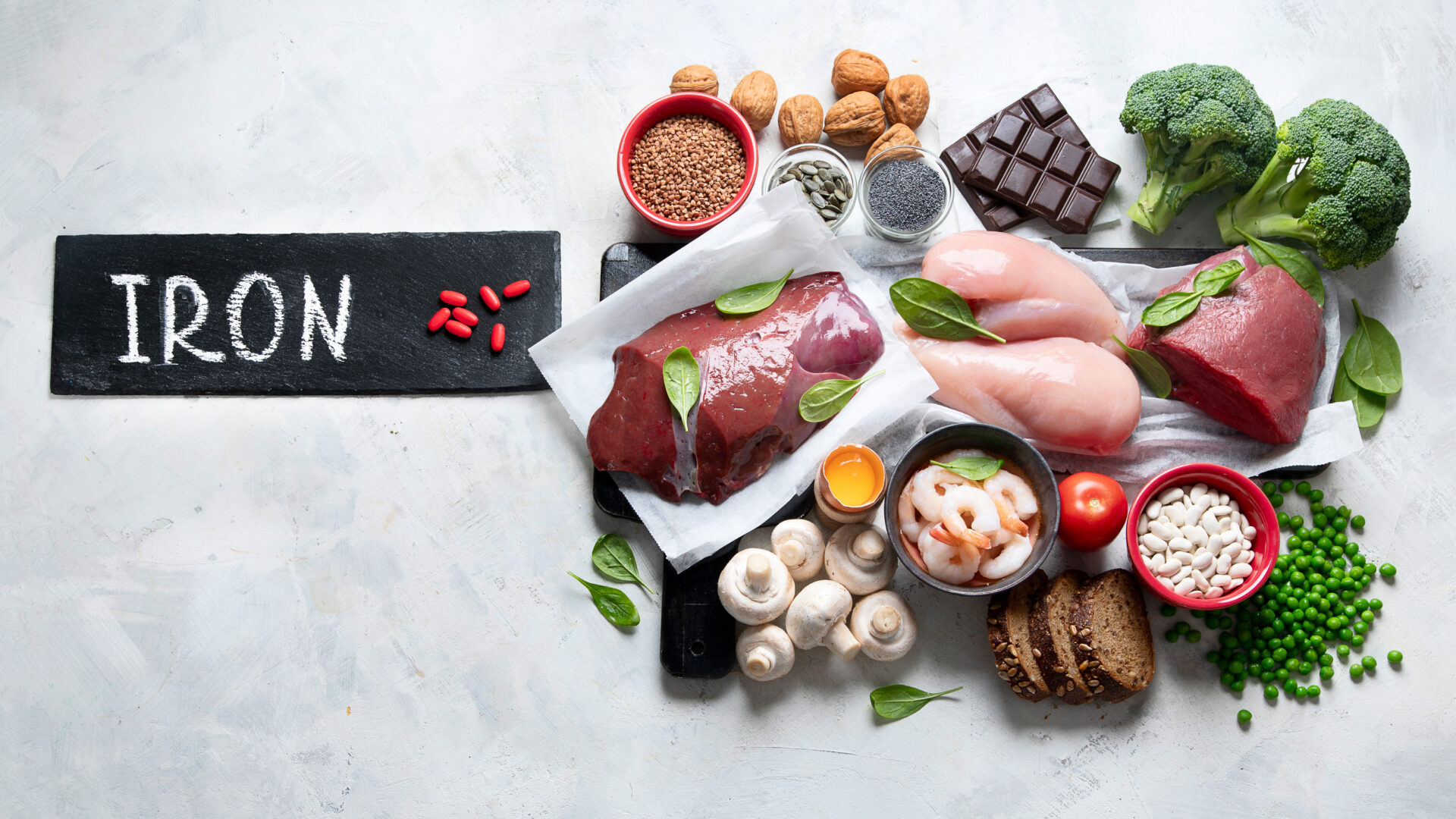
Iron is a nutrient that plays several essential roles in the body. Firstly, it is a key component of hemoglobin, the protein in red blood cells responsible for transporting oxygen from the lungs to tissues and organs throughout the body.
Iron also forms part of myoglobin, another protein that supplies oxygen to muscles, and is involved in various enzymatic processes crucial for energy production and metabolism. There are two primary forms of dietary iron:
- Heme iron: The standout quality of heme iron is that it is highly bioavailable, meaning the body easily absorbs it. It is found in animal products such as red meat, poultry, and fish.
- Non-heme iron: It is not as readily absorbed as heme iron. However, its absorption can be enhanced by consuming it with vitamin C-rich foods like citrus fruits.
During pregnancy, a woman’s blood volume increases by about 50%[1], which enhances the need for hemoglobin production to transport the additional oxygen required for both mother and baby. Without sufficient iron, the body cannot produce enough hemoglobin, leading to iron-deficiency anemia.
Iron deficiency is the most common nutritional deficiency worldwide[2] and leads to anemia. Globally, the prevalence of anemia is 74% among pregnant women[3]. The condition is characterized by fatigue, weakness, pale skin, shortness of breath, and impaired cognitive and immune function. Adequate iron levels are necessary to form the baby’s blood supply and ensure proper growth and development[4]. Iron supports the development of the brain and other vital organs, laying a strong foundation for the baby’s future health.
How Much Iron Should You Get During Pregnancy?
Now, how much iron does a pregnant woman need to keep the show running smoothly? The World Health Organization guidelines[5] recommend that pregnant women aim for around 27 milligrams of iron per day. During pregnancy, the recommended daily allowance for iron significantly increases to support both maternal and fetal needs.
Here’s a detailed look at the iron requirements for women at various stages[6]:
- Pregnant women: The RDA for iron is 27 milligrams per day.
- Non-pregnant women (ages 19-50): The RDA is 18 milligrams per day.
- Women (ages 14-18): The RDA is 15 milligrams per day.
- Breastfeeding women: The RDA is 9-10 milligrams per day, depending on age.
Factors like individual iron status, dietary habits, and any preexisting conditions can play a role in determining how much iron a pregnant woman needs. So, it’s always a good idea to chat with your healthcare provider to personalize your iron intake based on your unique needs.
The Best Iron-Rich Foods For Pregnancy
Ensuring adequate iron intake during pregnancy is vital for both maternal health and fetal development. Here’s a list of the best iron-rich foods to include in your diet;
Beef
Starting us off strong, beef is one of the best sources of heme iron, making it an excellent choice for pregnant women who need to increase their iron intake. One 3-ounce serving of lean sirloin beef contains about 1.5 mg[7] of iron.
Besides iron, beef provides a host of other essential nutrients that support both maternal and fetal health during pregnancy[8]. Vitamin B12, found in beef, supports the formation of red blood cells and helps maintain the nervous system. It is essential during pregnancy for fetal brain development.
Chicken
Chicken is another excellent source of iron for a pregnant woman’s diet. It contains 1.5 mg[9] of iron per 8-ounce serving, and it is safe to eat during pregnancy.
It is also rich in B vitamins, particularly B6 and B12, which aid in energy metabolism and support the nervous system. Proper cooking is essential to avoid foodborne illnesses, so ensure chicken is cooked to an internal temperature of 165°F.
Salmon
Salmon is an exceptional choice for pregnant women due to its rich nutritional profile. It is relatively rich in iron with close to 1.3 mg per 100 grams[10]. This oily fish is an excellent source of high-quality protein and heme iron. Pregnant women need adequate protein because it is essential for the growth and repair of tissues and the production of hemoglobin to prevent anemia.
Additionally, salmon is packed with omega-3 fatty acids, particularly DHA or docosahexaenoic acid, which are crucial for developing the baby’s brain and eyes. Omega-3s also support the mother’s heart health and reduce inflammation.
Lentils
On the other side, you have non-heme iron sources like Lentil. Lentils are an excellent addition to a pregnancy diet. These small legumes are particularly valuable for expectant mothers, as they help to meet the increased iron requirements necessary for the production of hemoglobin and the prevention of iron-deficiency anemia[11]. A cup of lentils has close to 6.6mg of iron[12].Additionally, lentils are packed with folate, which is crucial for fetal development, particularly in neural tube formation, and helps prevent birth defects such as spina bifida[13]. Lentils also provide significant amounts of fiber, aiding digestion and helping alleviate common pregnancy-related issues such as constipation.
How To Get Iron From Food?
Your food might have iron, but you might not get the full potential. First off, not all sources of iron are equal in the amount of iron available to be absorbed by the body. Heme iron is found in meat, poultry, and fish, while non-heme iron is found in both plant foods and meat.
Heme iron is much more readily absorbed by the body[14]. The body can absorb up to 30% of heme iron. On the other hand, it can only absorb 2%-10% of non-heme iron. However, we recommend eating both heme and non-heme iron together to get the full benefits.
Here’s how you can ensure you’re getting enough iron from food:
- Pair iron-rich foods with vitamin C: Vitamin C enhances non-heme iron absorption[15]. Pair iron-rich plant foods with vitamin C-rich options such as citrus fruits (oranges, lemons), strawberries, bell peppers, tomatoes, and leafy greens (spinach, kale).
- Eat fortified cereals: Fortified cereals can boost your iron intake since it is added to the cereal. Many sources have up to 41% of the Recommended Daily Allowance[16] of iron for pregnant women per cup, while unfortified cereals may only contain less than 10% of the RDA.
- Do not eat food that limits absorption: Certain substances can hinder iron absorption[17]. Avoid consuming tea, coffee, and calcium-rich foods (dairy products) around meal times, as they can inhibit iron absorption. High-fiber foods, such as whole grains or bran, can also interfere with iron absorption if consumed in excess.
- Use good cooking techniques: Use cast iron cookware, which can increase the iron content of foods, especially when cooking acidic foods like tomatoes. Avoid overcooking vegetables to preserve their iron content.
Consider iron supplements: If you struggle to meet your iron needs through diet alone, consult your healthcare provider about taking iron supplements. Iron supplements may be recommended during pregnancy for individuals with iron deficiency anemia or those with specific medical conditions.
Conclusion
To sum up, adequate intake of iron-rich foods during pregnancy helps maternal health and fetal development. Various iron sources, such as lean meats, fish, legumes, and fortified foods, can help meet the increased demand for this essential nutrient.
Iron supplements may be recommended by a healthcare provider for women who struggle to meet their iron needs through diet alone.
Frequently Asked Questions
Pairing non-heme iron sources with vitamin C-rich foods can enhance absorption. Add citrus fruits, bell peppers, and leafy greens to your meals.
Yes, substances like tea, coffee, and calcium-rich foods can inhibit iron absorption. Try to consume these foods separately from iron-rich meals.
While supplements can be beneficial, it’s essential to prioritize obtaining nutrients from whole foods whenever possible. Consult your healthcare provider to determine the appropriate supplementation for your needs.
Nuts and seeds, dried fruits, and fortified cereal bars are excellent portable snacks rich in iron. Pair them with a piece of fruit or yogurt for added nutrients.
Resources
MANA adheres to strict sourcing guidelines, avoids most tertiary sources, and uses only professional resources updated to contain accurate and current information. We majorly rely on peer-reviewed studies, academic research from reputable medical associations. For more information regarding our editorial process, please refer to the provided resources.
- Priya Soma-Pillay, Nelson-Piercy, C., Heli Tolppanen and Alexandre Mebazaa (2016). Physiological changes in pregnancy. Cardiovascular journal of South Africa/Cardiovascular journal of Southern Africa, [online] 27(2), pp.89–94. doi:https://doi.org/10.5830/cvja-2016-021.
- Vinogradova, M.A., Fedorova, T.A., Strelnikova, E.V., Oleg Rogachevsky, Shmakov, R.G. and Polushkina, E.S. (2014). Anemia during the Pregnancy: The Management and Outcomes Depending on the Etiology. Blood, [online] 124(21), pp.4830–4830. doi:https://doi.org/10.1182/blood.v124.21.4830.4830.
- Shwetha and Prasad, K.N. (2018). Prevalence of anemia among pregnant women – A cross-sectional study. [online] ResearchGate. Available at: https://www.researchgate.net/publication/332652708_Prevalence_of_anemia_among_pregnant_women_-_A_cross-sectional_study [Accessed 7 Jun. 2024].
- Abu-Ouf, N.M. and Jan, M.M. (2015). The impact of maternal iron deficiency and iron deficiency anemia on child’s health. Saudi medical journal, [online] 36(2), pp.146–149. doi:https://doi.org/10.15537/smj.2015.2.10289.
- Who.int. (2023). Daily iron and folic acid supplementation during pregnancy. [online] Available at: https://www.who.int/tools/elena/interventions/daily-iron-pregnancy [Accessed 7 Jun. 2024].
- Yadav, K., Arjun, M.C., Olivia Marie Jacob, Kant, S., Ahamed, F. and Ramaswamy, G. (2020). Comparison of different doses of daily iron supplementation for anemia prophylaxis in pregnancy: A systematic review. Journal of family medicine and primary care, [online] 9(3), pp.1308–1308. doi:https://doi.org/10.4103/jfmpc.jfmpc_960_19.
- Usda.gov. (2024). FoodData Central. [online] Available at: https://fdc.nal.usda.gov/fdc-app.html#/food-details/168727/nutrients [Accessed 7 Jun. 2024].
- Katharina, Noyuri Yamaji, Md. Obaidur Rahman, Suto, M., Takemoto, Y., Maria Nieves Garcia-Casal and Ota, E. (2021). Nutrition-specific interventions for preventing and controlling anaemia throughout the life cycle: an overview of systematic reviews. Cochrane library, [online] 2022(1). doi:https://doi.org/10.1002/14651858.cd013092.pub2.
- Usda.gov. (2024). FoodData Central. [online] Available at: https://fdc.nal.usda.gov/fdc-app.html#/food-details/171075/nutrients [Accessed 7 Jun. 2024].
- Usda.gov. (2024). FoodData Central. [online] Available at: https://fdc.nal.usda.gov/fdc-app.html#/food-details/171998/nutrients [Accessed 7 Jun. 2024].
- Rajib Podder, Bunyamin Tar’an, Tyler, R.T., Henry, C.J., DellaValle, D.M. and Vandenberg, A. (2017). Iron Fortification of Lentil (Lens culinaris Medik.) to Address Iron Deficiency. Nutrients, [online] 9(8), pp.863–863. doi:https://doi.org/10.3390/nu9080863.
- Usda.gov. (2024). FoodData Central. [online] Available at: https://fdc.nal.usda.gov/fdc-app.html#/food-details/172421/nutrients [Accessed 7 Jun. 2024].
- Alexander, R., Khaja, A., Debiec, N., Fazioli, A., Torrance, M. and Razzaque, M.S. (2024). Health-promoting benefits of lentils: Anti-inflammatory and anti-microbial effects. Current research in physiology, [online] 7, pp.100124–100124. doi:https://doi.org/10.1016/j.crphys.2024.100124.
- Elif Piskin, Cianciosi, D., Sukru Gulec, Tomas, M. and Esra Capanoglu (2022). Iron Absorption: Factors, Limitations, and Improvement Methods. ACS omega, [online] 7(24), pp.20441–20456. doi:https://doi.org/10.1021/acsomega.2c01833.
- Li, N., Zhao, G., Wu, W., Zhang, M., Liu, W., Chen, Q. and Wang, X. (2020). The Efficacy and Safety of Vitamin C for Iron Supplementation in Adult Patients With Iron Deficiency Anemia. JAMA network open, [online] 3(11), pp.e2023644–e2023644. doi:https://doi.org/10.1001/jamanetworkopen.2020.23644.
- Usda.gov. (2024). FoodData Central. [online] Available at: https://fdc.nal.usda.gov/fdc-app.html#/food-details/2343964/nutrients [Accessed 7 Jun. 2024].
- Elif Piskin, Cianciosi, D., Sukru Gulec, Tomas, M. and Esra Capanoglu (2022). Iron Absorption: Factors, Limitations, and Improvement Methods. ACS omega, [online] 7(24), pp.20441–20456. doi:https://doi.org/10.1021/acsomega.2c01833.


